|

Dry Turbo Pumping Station for $4,995
The $4995 Pfeiffer Vacuum HiCube™ Eco is a complete dry vacuum pump station. The plug and play vacuum system includes turbo and dry diaphragm pumps. It delivers a pumping speed of 67 l/s and an ultimate pressure of
<10-8 mbar.
Visa or MasterCard are accepted.
Learn More
Contact:
603-578-6500
|
Roll-Coating System
Ulvac's SPW-030 roll-coating system, designed for R&D and Pilot-scale production, is capable of processing a 300 mm-wide web of various substrate compositions including thin-gauge metal rolls and a variety of polymeric materials. The coating system can be equipped with up to four (4) sputtering cathodes and an electron beam evaporation source for depositing materials of varying compositions.
Learn More
Contact
1-978-686-7550
sales@us.ulvac.com
|
NEW! Optional Fast Shutdown for CPMX Matching Networks Minimizes Arc Damage
Comdel's new Fast Shutdown option provides automatic shutdown of the RF to minimize arc damage. Our integrated system works within the matching network and power supply, providing ultra fast shutdown in less than 1.5 microseconds. Available on all CPMX Matching Networks and CX Power Supplies.
Learn More
Comdel11 Kondelin Road
Gloucester, MA 01930
Tel: 978-282-0620 or 800-468-3144
Fax: 978-282-4980 www.comdel.com
info@comdel.com
|

Choose Evatec's MSP sputter tool for high volume production in 3D technology and enjoy excellent thin film repeatabilities, a proven tool concept and a reliable partner. Contact Evatec's dedicated USA office for all your local sales and service requirements in thin film technology.
Phone:
(603) 669-9656
www.evatecnet.com
E-Mail: infoNA@evatecnet.com
|

Soft Start Pumps
Pump Pressure Control
Rotary Vane Pumps from 3.5 to 28 cfm with programmable soft start and pressure control. Determine vacuum level for your process and adjust the pressure controller accordingly. Pump will run at max speed until desired pressure is reached then slow to maintain vacuum selected.
Phone:
800/426-9340
Web: www.vacuumresearch.com
E-Mail: vrc@vacuumresearch.com |
|
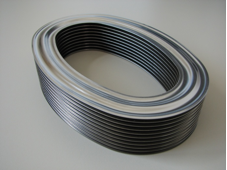
MEWASA has expanded the manufacturing possibilities of its bellows production, allowing the manufacture of bellows up to 1100mm in diameter. Combined with the modern PC-based control, our machine provides the flexibility to weld arbitrary bellows profiles, including oval shaped bellows with inside dimensions of 66.7 to 117.5mm. MEWASA has widened its capabilities, offering greater design solutions to meet your engineering applications, whether it is larger dimensions or different profile shapes.
Contact: Ira Miller,
General Manager,
Mewasa North America
i.miller@mewasa.ch
Tel: 520-797-6980
|
|
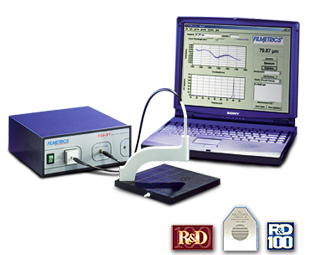
Filmetrics Thin-Film Thickness Measurement Systems
-Measure thickness from 1nm to 1mm
-Measure refractive index and other properties
-Used in thousands of applications worldwide
We offer the industry's only complete line of thin-film
measurement instruments. With our 24-hour online
"Hands On" support, expert help is only a minute away.
Contact:
www.filmetrics.com
858-573-9300
|
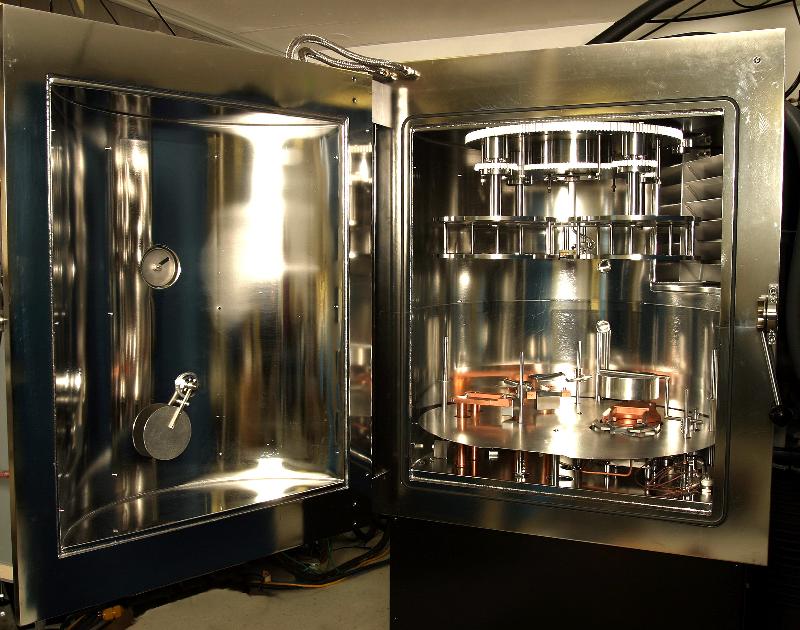
Dynavac's 1-meter Optical Coating System
is a cost-effective tool for producing high-quality precision optics. Its versatile design supports a wide range of process options including IAD, and the split-cylinder chamber provides easy maintenance while minimizing footprint. System interface and control is simple and supports download capability from most thin film design packages.
www.dynavac.com
Telephone: 781-740-8600
E-Mail: sales@dynavac.com
|
|
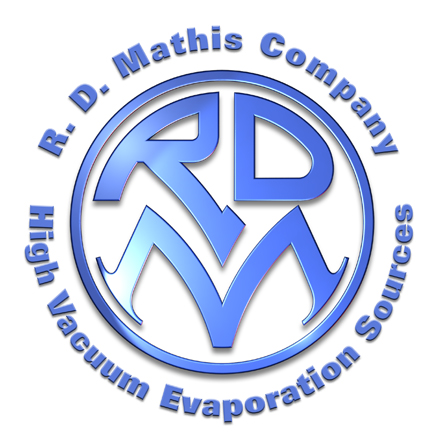
The R.D. Mathis Company specializes in the fabrication of high vacuum evaporation sources for thin film coating industries. We offer a comprehensive selection of tungsten, molybdenum and tantalum sources through our catalog and offer custom fabrication to meet your specific coating needs. Our "LV Series" Low Voltage, High Current Power Supplies and "GP 100" Inert Gas Purifier compliment your evaporation process.
Contact:
www.rdmathis.com
562-426-7049
|

Speed pump-down and vacuum performance with RediVac™ Vented Screws and Vacuum Baked O-Rings from UC Components Inc. www.uccomponents.com |
|
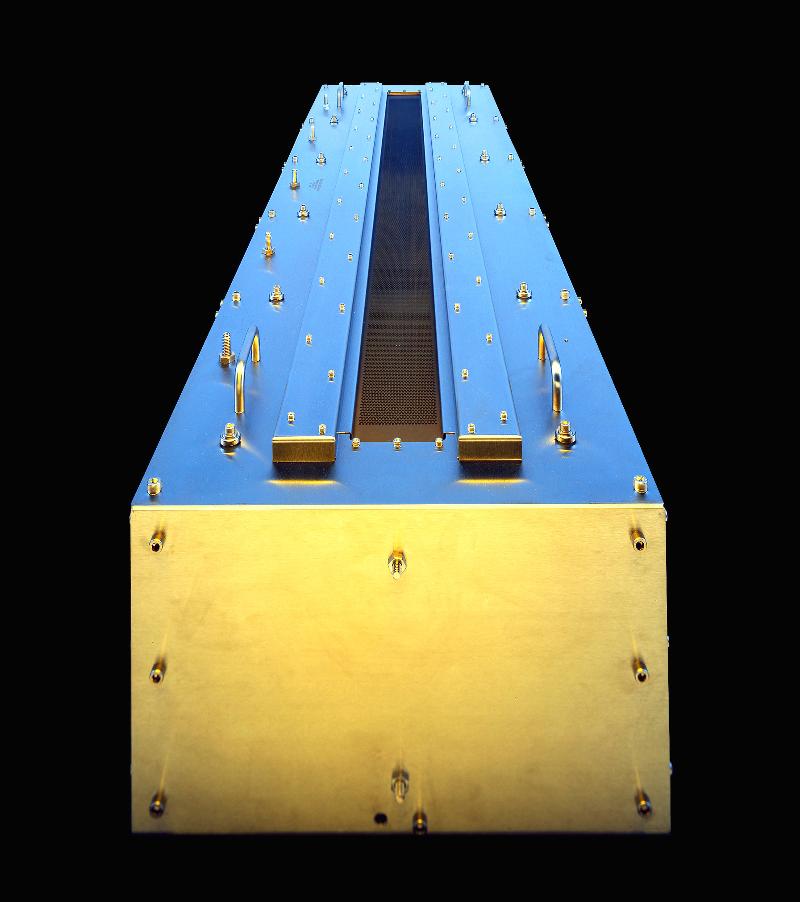
Veeco provides RF Linear Ion Sources for uniform processing of medium and large scale substrates featuring a broad power range and patented four-grid beam collimation technology to meet your application needs with proven reliability and performance.
To Learn More Visit:
www.veeco.com
970-221-1807
|
|
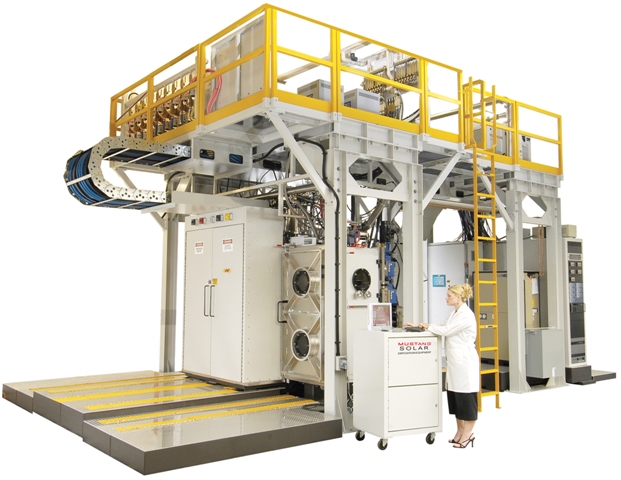
Mustang Vacuum Systems ORION Roll to Roll Deposition Systems
Substrate: Up to 10,000 FT length, 1000 MM wide flexible substrates configured with 1-10 deposition sources for precision and speed. Deposition zones are individually configurable for PVD sputter, evaporation, co evaporation and sublimation enabling the next generation of thin film technologies.
Learn More
Contact us via E-Mail: inquiries@mustangvac.com
|
|
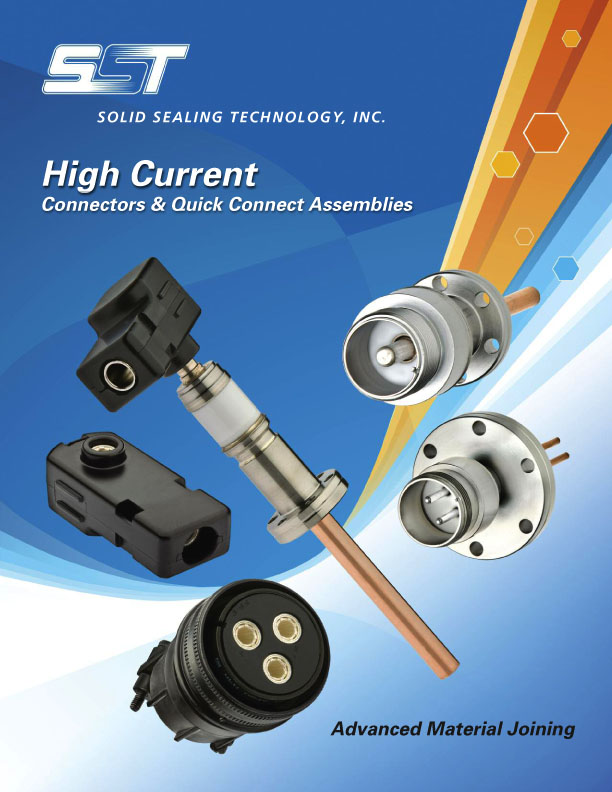
Solid Sealing Technology specializes in the design and manufacture of highly engineered hermetic products using metalizing, brazing, glass-ceramic sealing, welding, and critical assembly. SST manufactures industry standard and custom designed Vacuum Feedthroughs, Coaxial Connectors, Multi-Pin Connectors, Thermocouples, and Isolators for high temperature, UHV, and high pressure applications.
Contact:
Ph: 518-874-3600
Fax: 518-874-3610
info@solidsealing.com
|
|
SVC 2011 TechCon in Chicago, IL
|
 Like us on Facebook! Like us on Facebook!
Like us today and keep track of all the up-to-the-minute SVC News.
|
|
|
|
This issue of SVConnections is a truly global representation of materials research and industry, shedding light on the importance of partnerships to achieve meaningful results. This collaboration of innovative individuals and organizations delivers services and products that eventually become part of our everyday lives. What's in store for us tomorrow? This issue gives you a little snapshot...
An important note: add svcadmin@svc.org to your e-mail's white list to ensure you continue to receive your monthly issue of SVConnections.
|
|
|
Cutting Edge Technology Gets Even Sharper
"Disposable razor blades could become a thing of the past if scientists at Gesellschaft für Diamantprodukte mbH (GFD) have their way. The German high-tech company has developed a super-sharp razor blade made of industrial diam onds that could last more than 1,000 times longer than today's conventional blade. The technological breakthrough achieved by GFD employs two specialized processes: the nanocrystalline diamond coating of a carbide blade followed by the plasma sharpening of the blade. To manufacture such a razor blade, a nanocrystalline diamond coating is first applied to a carbide blade, then the minute, jewelled layers are polished by an innovative plasma sharpening process developed by the GFD researchers. The blade is polished until the cutting edge is sharpened to only a few nanometers, therefore consisting of merely a few atoms. This process manages, for the first time, to combine the hardest material in the world with the sharpest possible cutting edge." onds that could last more than 1,000 times longer than today's conventional blade. The technological breakthrough achieved by GFD employs two specialized processes: the nanocrystalline diamond coating of a carbide blade followed by the plasma sharpening of the blade. To manufacture such a razor blade, a nanocrystalline diamond coating is first applied to a carbide blade, then the minute, jewelled layers are polished by an innovative plasma sharpening process developed by the GFD researchers. The blade is polished until the cutting edge is sharpened to only a few nanometers, therefore consisting of merely a few atoms. This process manages, for the first time, to combine the hardest material in the world with the sharpest possible cutting edge."
Sources:
Click on the links to read these articles:
Mantra Publications:
http://en.blades.diamaze-gfd.com/uploads/media/20100628_GFD_press_release_razor_blade.pdf
Read more about GFD, The Gesellschaft für Diamantprodukte mbH (The Corporation for Diamond Products) at http://en.blades.diamaze-gfd.com/
Image: GFD
|
|
3M to Begin High-Volume Production of 3M™ Ultra Barrier Solar Film
October 15, 2010
"3M today announced the expansion of its manufacturing facility for its 3M Ultra Barrier Solar Film. As a key component supplier to the solar industry, this expansion will support the growing demand for high efficiency flexible PV modules. The majority of the facility expansion, located in Columbia, Missouri, is scheduled to be completed in 2011.
'3M once again demonstrates the value it brings to the rapidly expanding renewable energy sector by bringing our high-performance Ultra Barrier Solar Film to commercial-scale production," said Derek DeScioli, Business Development Manager for the 3M Renewable Energy Division. "3M is a recognized leader in ultra barrier film technology, and we are committed to accelerating our efforts to support the scale-up of our thin film manufacturing customers.'
Designed to address the needs of flexible thin film solar manufacturers, 3M Ultra Barrier Solar Film acts as a replacement for glass with high light transmission, superb moisture barrier performance, and excellent weatherability. Compared with glass-glass modules, large area, light weight flexible PV modules manufactured with 3M Ultra Barrier Solar Film can achieve significantly lower balance of systems (BOS) costs by requiring less installation time, removing the need for metal racking, and reducing logistics expenditures. 3M Ultra Barrier Film also enable lower module manufacturing costs by allowing manufacturers to commercialize large area modules, effectively reducing fixed costs associated with module manufacturing, assembled in a continuous roll-to-roll process."
Source:
Click on the link for more information
Global Solar Technology:http://globalsolartechnology.com/index.php?option=com_content&task=view&id=6475
|
Silicon-Tandem Solar Cell with 11.9 Percent Efficiency
"CORNING, N.Y., September 07, 2010 - Corning Incorporated (NYSE: GLW) and Oerlikon Solar (SIX: OERL) announced today that they have achieved a record-breaking 11.9 percent stabilized conversion efficiency in a silicon-tandem, research-size photovoltaic cell. Results were confirmed by the United States National Renewable Energy Laboratory (NREL).
Based on the unique combination of Oerlikon Solar's world leading Micromorph® technology and Corning's thin specialty glass, the resulting solar cell's energy conversion efficiency exceeds the current 11.7 percent industry record, set in 2004, and was achieved without the use of antireflective coating."
Sources:
Click on the links for more information:
Corning: http://www.corning.com/news_center/news_releases/2010/2010090701.aspx More about Corning at: http://www.corning.com Read about Oerlikon Solar at: http://www.oerlikon.com/
|
Toshiba Unveils World First 3D LCD TVs without Dedicated Glasses
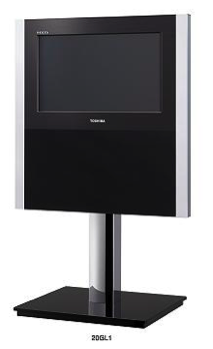
October 4, 2010, Tokyo
"Toshiba Corporation today unveiled the world's first LCD TVs that offer comprehensive 3D capabilities without any need for dedicated glasses. The new 'Glasses-less 3D REGZA GL1' series offers two models with screen sizes specifically designed for personal use: the 20-inch 20GL1 and the 12-inch 12GL1. Both TVs will be available in Japan from the end of December.The new Glasses-less 3D REGZA GL1 series employ an integral imaging system and perpendicular lenticular sheet that can display natural and smooth high quality 3D images. A lenticular sheet is an array of lenses that transmits images in a horizontal plane. The sheet is semi-circular in profile. Toshiba's technology simultaneously delivers nine parallax images to the LCD panel and controls and optimizes light emission and direction from the center, right and left of the screen to secure a wide viewing angle. The result is optimized display of high quality 3D images whatever the position and angle to the screen of the viewer. This technology is the recipient of the 21st Century Invention Prize for 2010, one of the National Commendations for Invention, from the HATSUMEI KYOKAI, Japan Institute of Invention and Innovation."
Sources:Click on the links for more information:Toshiba: http://www.toshiba.co.jp/about/press/2010_10/pr0402.htm A video of the new TV is on YouTube Image: Courtesy of Toshiba |
|
DelSolar and IBM Sign Joint Agreement to Develop Solar Cell Technology
"TAIPEI, September 27, 2010 - DelSolar Co., Ltd (3599.TW) announced today that it has signed an agreement to jointly develop compound thin film solar cells with IBM (NYSE:IBM) aimed to surpass next generation thin film solar cell technology and result in commercial production. The collaboration includes leveraging DelSolar's existing expertise in photovoltaic ("PV") technology and process as well as IBM's advanced semiconductor technology and materials science know-how. "
"This agreement is a significant step in the progress of our effort to create efficient solar cells using earth abundant materials with novel processes" said T.C. Chen, Vice President of Science and Technology IBM Research. "We already have an excellent collaboration with Tokyo Ohka Kogyo Company LTD. ("TOK") for developing manufacturing tooling and the chemistries required for this technology. Recently IBM demonstrated record solar cell efficiencies using a copper zinc tin sulfur selenide (CZTS) material. This new collaboration between DelSolar, TOK, and IBM now puts us firmly on the path to commercially viable technologies and processes for solar cells that could bring us closer to grid parity."
"Thin film solar cell technologies have been based earlier upon amorphous silicon, CdTe, and CIGS. This new technology is based upon inexpensive , earth abundant components, thereby circumventing the need for cadmium which is toxic, or materials whose availability may be questionable for the large volume growths anticipated in the future (indium or tellurium)."
Source:
Click on the link to learn more:
DelSolar Co. Ltd.
|
Nanotubes: Conductors to Semiconductors
 Single-walled nanotubes (SWNT), which are rolled-up sheets of graphene, come in may forms (chiralities) depending on how they are rolled. Some are semiconduting and some are highly conductive metallics. Metallic carbon nanotubes show great promise for power transmission. Single-walled nanotubes (SWNT), which are rolled-up sheets of graphene, come in may forms (chiralities) depending on how they are rolled. Some are semiconduting and some are highly conductive metallics. Metallic carbon nanotubes show great promise for power transmission.
Rice University physicist, Junichiro Kono and his team have shown that magnetic fields can change metallic carbon nantubes to semiconductors by changing the band gap. Thus, by changing the magnetic fields, you can switch between the two states. This opens up a whole new field of applications for nanotubes.
Click to read this entire Materials Today article
September 2010 Issue, p. 13
Image: Wikimedia Commons
|
|
Charge Transfer between Forms of Nanocarbons
This article discusses the different types of nanocarbons (fullerenes, graphene and single-walled nanotubes [SWNTs]), their electrical properties, and how charge is transferred between the various types of nanocarbon forms. The electron transfer properties may lead to new device applications. This article contains excellent discussion with references. -DMM
Click to read this entire Materials Today article
September 2010 Issue, pp. 34-40
|
|
China Halts Shipments to U.S. of Tech-Crucial Minerals
"A nasty trade dispute appears to have prompted Chinese customs officials to block shipments of rare earth minerals to the U.S.
The move underscores a deepening U.S. vulnerability because of its dependence upon China for tech-crucial rare earth minerals (also known as rare earth elements). Small but significant amounts of the minerals go into creating everything from PCs and cellphones to wind turbines and hybrid cars, as well as U.S. military technologies such as missile guidance systems.
This latest news came from three rare earth industry officials cited by the New York Times. The officials spoke on the condition of anonymity for fear of backlash from China. China currently controls about 97 percent of rare earth production, and has the only facilities capable of processing rare earth minerals after they have been mined. Rare earth minerals are not exactly rare, but the mining and refining processes can be costly and time-consuming.
Official Chinese plans have called for China to reduce rare earth mineral exports to meet its own rising industrial demands. That already indicated to many industry experts that countries such as the U.S. would have to find alternate supplies soon. U.S. rare earth companies have begun looking to reopen old mines and search for new deposits, but industry experts say that relaunching an independent U.S. supply chain could take 15 years. The latest Chinese action follows a similar move last month, when China halted shipments to Japan during a political dispute over Japan's arrest of Chinese fishermen. Among the affected Japanese companies was Toyota, maker of the popular Prius hybrid cars which incorporate the rare earth element neodymium, among others."
Sources:
Click on the links to learn more:
www.livescience.com: www.livescience.com/technology/etc/101019-china-halts-shipments-tech-crucial-minerals.html
|
Surface Modification of Polymers by Vapor Deposition
In CVD polymerization, the monomers are deposited on the surface from the vapor phase and polymerized on the surface. The CVD films conform to the surface with uniform thickness and when polymerized by electron, plasma, or UV, the surface may have different properties than the underlying base material. This article focuses on two CVD polymerization methods, namely initiated CVD and oxidative CVD methods. Selected applications of the technology are presented, with references. -DMM
Click to read the entire Materials Today article
May 2010 Issue, pp. 26-33
|
Flexible Graphene Memristors
October 2010, By Prachi Patel, IEEE Spectrum
"South Korean researchers have recently made a flexible nonvolatile memory based on memristors-fundamental electr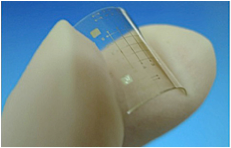 onic circuit elements discovered in 2008-using thin graphene oxide films. Memristors promise a new type of dense, cheap, and low-power memory and have typically been made using metal oxide thin films. The new graphene oxide devices should be cheaper and simpler to fabricate-they could be printed on rolls of plastic sheets and used in plastic RFID tags or in the wearable electronics of the future. onic circuit elements discovered in 2008-using thin graphene oxide films. Memristors promise a new type of dense, cheap, and low-power memory and have typically been made using metal oxide thin films. The new graphene oxide devices should be cheaper and simpler to fabricate-they could be printed on rolls of plastic sheets and used in plastic RFID tags or in the wearable electronics of the future.
"We think graphene oxide can be a good candidate for next-generation memory," says Sung-Yool Choi, who leads flexible devices research at the Electronics and Telecommunications Research Institute in Daejeon, South Korea. Choi and his colleagues reported their device last week in Nano Letters.
Memristors change their resistance depending on the direction and amount of voltage applied, and they remember this resistance when the voltage is removed. Most memory types store data as charge. But memristors would enable what's called a resistive RAM, a nonvolatile memory that stores data as resistance instead of charge.
Although the idea for memristors was first proposed in 1971, Hewlett-Packard made the first practical device only two years ago and plans to commercialize the technology within three years. HP's design consists of two arrays of parallel wires arranged perpendicular to each other with a titanium dioxide layer sandwiched in between. Each cross point is a memristor."
Source:
Click on the link to read the full article:
IEEE Spectrum: http://spectrum.ieee.org/semiconductors/nanotechnology/flexible-graphene-memristors
Image: Sung-Yool Choi
|
The Next Step for Green Electronics: Think Thin Film
October 8, 2010, By Micahel Kanellos, Greentech Enterprise
Chiba, Japan -- Electronics manufacturers have taken fairly impressive strides in increasing their energy efficiency in recent years. Some classes of components are already in the 80-to-90-percent efficiency range.
 So what will they do for an encore? Take out the bulk. So what will they do for an encore? Take out the bulk.
The flexible organic light emitting diode (OLED) display in the video below was one of the more impressive demos at Ceatec, the large technology trade show taking place outside of Tokyo. (I'm chairing the "Best of Show" committee.) It measures 0.3 millimeters thick, but it can play video in color. If you're looking for Harry Potter-like moving newspapers, here's your answer.
The screen is experimental, but if the sizes can be increased and the cost can be lowered a la Moore's Law, one can imagine how this technology could put a dent in demand for raw and industrial materials like copper, resins, and glass. Lower demand for these kinds of materials would in turn lower the amount of emissions from mining, transportation and production.
Source:
Click on the link to read the full article:
greetechenterprise: http://www.greentechmedia.com/articles/read/the-next-step-for-green-electronics-think-thin-film/
Image: GreenTech Media
|
Small Lightweight Night Vision Devices
Commercial night vision devices use electron tube technology necessitating high voltages. The new devices use organic light-emitting diode technology. The structure is simple: it consists of a photodetector connected in series with an LED. When operating, infrared photons are converted to electrons in the detector and these electrons are injected into the LED generating visible light. The size and weight of the devices hold the potential to be incorporated in everyday devices such as cell phones or standard eyewear. -DMM
Click to read this entire Materials Today article
|
Producing Circuit Boards with Plastic
October 20, 2010, Semiconductor Online
"There is a large growth market for flexible circuits, RFID antennas and biosensors on films. Researchers from the Fraunhofer Institute for Surface Engineering and Thin Films IST are presenting a new technology at K 2010, the international trade fair for plastics and rubber (Hall 3, E91): the experts can now apply conductive metal circuits to plastic substrates in a process that is energy- and material-conserving and thus more sustainable.
Flexible circuits can be found in many devices where space and 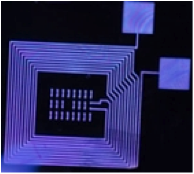 weight considerations are dominant in the design of electronics: in cars, in cameras and video equipment, in mini-computers for athletes or in inkjet printers. And the market continues to grow: according to the business consultancy Frost & Sullivan, sales in this area will grow to more than $16 billion by the year 2014. weight considerations are dominant in the design of electronics: in cars, in cameras and video equipment, in mini-computers for athletes or in inkjet printers. And the market continues to grow: according to the business consultancy Frost & Sullivan, sales in this area will grow to more than $16 billion by the year 2014.
At K 2010, the trade fair for plastics in Düsseldorf, Germany, scientists from the IST in Braunschweig will unveil a new reel-to-reel technology for the production of flexible circuits and biosensors; the new technology is known as 'P3T', which is shorthand for 'Plasma Printing and Packaging Technology'. The benefits: P3T involves considerably fewer process steps than existing processes, and it conserves raw materials. Unlike previous methods, the researchers do not start with a polymer film metalized over its entire surface from which excess metal is then removed to create the circuits. Instead, to produce flexible circuit boards, they apply circuits made of copper to the film that serves as substrate. In the case of biosensors, palladium is used. They use plasma at atmospheric pressure and galvanization instead of vacuum-pressure and laser-based methods to achieve inexpensive and resource-efficient production."
Source:
Click on the link to read the full article:
Semiconductor Online: http://www.semiconductoronline.com/article.mvc/Producing-Circuit-Boards-With-Plastic-0001?VNETCOOKIE=NO
and on the Fraunhofer-Gesselschaft Web Site: http://www.fraunhofer.de/en/press/research-news/2010/10/circuit-boards-with-plasma.jsp
Image: Fraunhofer-Gesellschaft
|
|
 Interested in sharing the latest news in vacuum coating technology? Forward us a link to an article you want to share with the rest of the SVC readership to publications@svc.org. Purchase advertising space on this newsletter by contacting SVC at svcinfo@svc.org. Interested in sharing the latest news in vacuum coating technology? Forward us a link to an article you want to share with the rest of the SVC readership to publications@svc.org. Purchase advertising space on this newsletter by contacting SVC at svcinfo@svc.org. |
Society of Vacuum Coaters 71 Pinon Hill Place, NE
Albuquerque, NM 87122
(505) 856-7188 Fax (505) 856-6716
www.svc.org E-mail: svcinfo@svc.org
|
|
|